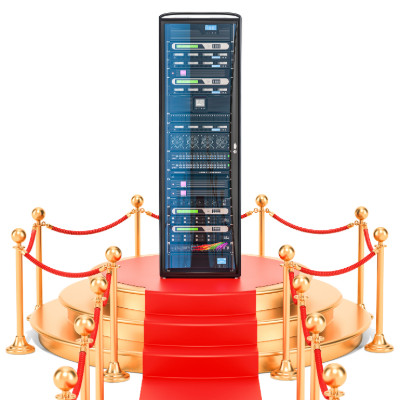Network bottlenecks are some of the biggest problems that businesses face in their networking architecture. While you might be paying your ISP for a certain speed standard, chances are you’re not getting it, especially if you’re relying on a consumer-grade router. If your network can’t handle all the abuse you throw at it day to day, then you could be putting your productivity and profits in jeopardy.
Accucom Blog
In IT, we often talk in terms of firewalls, encryption algorithms, and next-generation detection and response tools. We meticulously patch systems, configure complex security policies, and deploy the latest hardware. After two decades in this field, I can tell you where the biggest, most persistent vulnerability lies: the people.
Most modern businesses are powered by their on-premise server hardware assuming that it creates a more secure environment for them. While having your data close by, where you can easily access it, sounds like a great idea, know that there are also issues that arise from these kinds of arrangements. In fact, your business might be the most dangerous place you can host your data. Here’s why.
Historically, AI has been perceived by SMBs as complex, expensive, and outside their operational scope. Today, the democratization of AI via SaaS and integrated platforms makes it a cost-effective, practical IT asset with measurable ROI.
Here are three focused areas where AI can be strategically deployed to optimize your business performance:
Ask yourself honestly: How well does your current IT support function? If your answer is merely "fine" or "good," you're likely settling for the status quo and missing out on significant benefits. True IT partnership isn't about break/fix; it's about strategic growth.
If your provider has never discussed your long-term goals or future technology needs, it's time for a change. If you’re seeking a partner that delivers more than just basic support, we invite you to consider Accucom and our brand of comprehensive managed services.
No matter the size or industry of your business, effective communication is a constant challenge that dictates where you spend your tech budget.
Fortunately, there is a simple, strategic, and powerful solution: Voice over Internet Protocol (VoIP). This modern technology is a sound upgrade from traditional telephone systems and is ready to transform your communication infrastructure for the better.
With AI taking over the zeitgeist, you’re probably wondering what the big deal is and how you can use it for your business. That said, AI is far from infallible: you can experience issues with your AI models. We’re not just talking about operational problems; we’re talking about the value and validity of its responses to your queries.
Artificial intelligence has officially moved from science fiction into our daily toolkit. Whether you're drafting an email, brainstorming a new project, or debugging code, AI tools can dramatically boost productivity. Like any powerful tool, however, knowing how to use it effectively is growing in importance. This week, we thought we’d give you three tips on how to get AI to work best for your organization.
With the new year fast approaching, it’s worth thinking about how your organization can be more future-minded. This involves considering artificial intelligence, or AI, as a means to accomplish more for your business. Of course, you also need to be careful about what data you provide AI with, as it can easily snowball out of control if you’re not careful with your approach.
Email is a vital tool to have in the workplace, but it still deals with its fair share of issues—particularly in regards to time wasters and security risks. You can save time, money, and future headaches by proactively addressing your email policies. Today, we want to look at two ways you can keep email from holding your business back: spam blocking and archival solutions.
Picture this: you’re at a major industry conference. The coffee is mediocre, the lanyards are itchy, but the networking is pure gold. You strike up a conversation with a peer, an owner of a competing company. After some friendly back-and-forth, they ask, "So, how are you guys handling lead follow-up from these events? It's always such a manual grind for us."
You smile as you pull out your phone. "It used to be," you say. "Now, we just do this."
You tap a custom form on your phone, enter the information, and press submit. "There," you say. "That person is now in our CRM, they've just received a welcome email with our digital brochure, and a follow-up meeting is already being proposed for next week. The whole thing is automated."
The look on their face? A perfect, beautiful blend of awe and envy. That’s the ultimate conference flex: showcasing a business that runs like a well-oiled machine. It’s a silent testament to efficiency, foresight, and having the right technology in your corner.
Let’s face it, the Internet is absolutely everywhere, and most likely contributes to your success. That means it is important that your business’ Internet connection meets the requirements of your operations, starting with its bandwidth. Let’s go over what bandwidth actually is, and how to make the most of your Internet service.
Your business has a lot of technology at its fingertips, but how effectively are you using it? Chances are some of your tools might have more practical uses than you might expect. One such tool is Microsoft Excel, Microsoft 365’s spreadsheet building platform. Here are three ways you can use Excel for your SMB that you might not have thought about.
The Chief Information Officer of a business has the primary responsibility of managing the organization’s technology, which in turn places a lot of stress on them as an individual. They implement strategies to help the business thrive, but they also take the blame for when those initiatives fail. They might even be tempted to say “yes” to requests even when they might feel like they should say “no.” Let’s look at three technologies that CIOs are implementing for businesses.
AI has become one of the spiciest topics in business, and with it being more accessible than ever, many people are asking, “What can I do with this new tech?” AI can be leveraged in many ways, and businesses can make excellent use of it to reduce their expenses. However, businesses aren’t the only ones looking to take advantage of this technology; wage workers are finding new and creative ways to streamline their tasks, increase productivity, and explore new opportunities for growth, all in an effort to cope with the rising prices that seem impossible to escape.
Look around, whether you’re working in the office, at home, or remotely. How much smart technology is around you right now, forming an Internet of Things? Connected technologies add an unprecedented convenience to life. The question is, is the convenience worth the inherent security tradeoff that each new connected device brings?
The challenge comes from the fact that the devices that make up the IoT are so frequently made with little-to-no thought or effort put into their security. Let’s talk about why this is such a huge risk factor and what you can do to take advantage of these devices while minimizing such risks.
Small businesses have a lot of problems to worry about, including technology issues and challenges that prevent them from operating efficiently. When a problem strikes, you want to resolve it as soon as possible, period. Wouldn’t it be great if you could prevent the problem in the first place, though?
When your business is operating the way it should, it can feel like a well-oiled machine. Unfortunately though, the second something goes wrong, it starts spitting and sputtering, and before you know it, operations are impacted to the point where you’re left wondering what to do next. If you’re constantly reacting to server crashes, downtime, and data loss, you’re not running a business—you’re prolonging the inevitable, and that’s not serving you or your customers the way they deserve.
It’s easy to forget about the mobile devices, like smartphones and tablets, that power your organization, but the fact remains that they are an extension of your office’s infrastructure. Just like how you would secure an in-house desktop or laptop, you must also secure your mobile devices, as they present a considerable security risk otherwise. The key to doing so is with a comprehensive Mobile Device Management (MDM) strategy.























